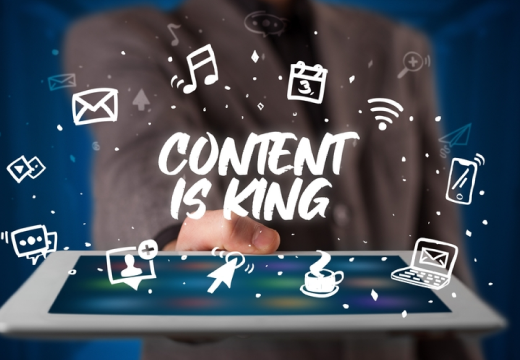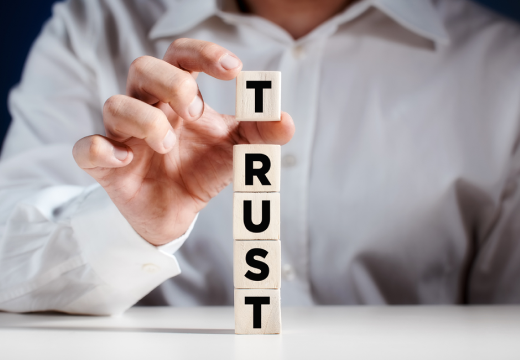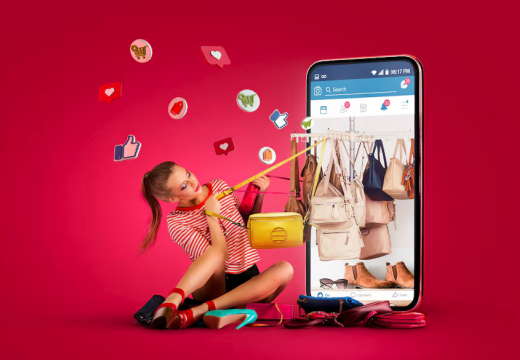In today’s digital age, social media is no longer just a platform for social interaction or entertainment—it’s a powerhouse for businesses to drive sales. Small and medium-sized enterprises (SMBs) are witnessing an unprecedented increase in traffic from social platforms like Facebook, Instagram, and TikTok.
Yet, despite this surge in engagement, many struggle to convert these valuable clicks into actual customers. This problem isn’t isolated to large corporations; it’s something businesses of all sizes face when they don’t optimize their approach to turning social interactions into tangible sales.
While driving traffic to your website is an essential first step, it’s only half the battle. To truly capitalize on your social media presence, you need to master the art of converting those clicks into customers. This is where social media sales techniques come into play.
In this post, we’ll explore how to build a robust social media sales strategy that transforms your audience’s interest into actual sales, using proven tactics that small and medium-sized businesses can implement right away.

1. Defining the Click-to-Customer Ecosystem
What is Conversion? When you hear the word “conversion” in the context of social media, it often refers to the simple act of clicking on a link. However, in the world of social media marketing, conversion is much more than just that—it’s about nurturing the interest sparked by a click and guiding your leads through a well-defined customer journey. A click is the first step in the buying process, but it’s the following steps—engagement, nurturing, and offering solutions—that indeed close the sale.
Conversions occur when a user moves from being a casual observer to a committed buyer. This transition can only happen if businesses focus on converting interest into action at each stage of the funnel.
Understanding Social Media Funnels: Every customer journey starts with awareness. They see your ad, post, or product, and they click through to learn more. From there, your goal is to move them seamlessly from curiosity to consideration and finally to decision. This is where understanding social media sales funnel becomes critical.
The Funnel Breakdown:
- Awareness: Your audience becomes aware of your brand, usually through organic or paid content on social media.
- Interest: The potential customer clicks on your content or product, showing interest.
- Consideration: At this stage, they evaluate whether your product or service meets their needs. This is where value-driven content such as testimonials, demos, and comparison posts come into play.
- Conversion: The final step in the funnel, where the user makes a purchase or subscribes to your service.
Each stage requires specific strategies to keep the user moving through the funnel. You need to make sure the path from one stage to the next is as smooth and engaging as possible.
The Human Psychology of Online Purchases: To understand why people click and how they convert, you need to look at consumer psychology. Buyers on social media are often in a passive mindset; they may have clicked on your ad or post out of curiosity, but they’re not necessarily ready to purchase right away. That’s why building trust is crucial. Trust, urgency, and value are potent tools in nudging potential customers toward making that final purchase.
People buy from brands they trust. Social media allows you to humanize your brand, build credibility, and foster relationships with your audience through storytelling, engagement, and consistency.
2. Building a Conversion-Optimized Social Media Presence
Branding That Speaks for Itself: One of the key factors in converting clicks into customers is consistency in your brand messaging across all social media platforms. Consistency reinforces brand identity, builds credibility, and creates an instant connection with your audience. Whether it’s your logo, color scheme, or tone of voice, every element should be aligned to send a unified message.
Your profile is the first thing visitors will see. Make sure your bio, profile picture, and the links you share on your social media channels are optimized for conversions. Direct visitors to your most lucrative landing pages, such as your online store or a special offer page.
Crafting Clear, Actionable CTAs: An often-overlooked aspect of social media sales is the strategic use of call-to-action (CTA) buttons. While it’s tempting to use basic CTAs like “Click Here,” these can be too generic and passive. Instead, try CTAs that compel action, such as “Claim Your Free Trial,” “Get 20% Off Today,” or “See How It Works.”
The key is to craft CTAs that give a sense of urgency and are directly aligned with what the customer will experience once they click. Your CTA should be irresistible and lead the customer naturally to the next step in the buying process.

3. Content is King — Crafting Stories That Convert
The Power of Narrative: People connect with stories, not products. On social media, businesses need to tell stories that engage, resonate, and build trust with their audience. Whether it’s a customer success story, the origin of your brand, or a day-in-the-life behind-the-scenes, storytelling humanizes your brand and creates emotional connections.
For small businesses, this is a goldmine. Your authenticity can shine through in ways larger companies can’t replicate, allowing you to connect with your audience on a deeper level. Sharing user-generated content (UGC) and customer testimonials is another effective storytelling tactic. When potential customers see how your product has positively impacted others, it provides powerful social proof.
High-Converting Content Formats: Not all content is created equal. Some formats are more likely to drive conversions than others.
- Video: Short-form videos, particularly on platforms like Instagram Reels, TikTok, and Facebook Stories, are proven to drive higher engagement and conversions. Videos allow you to showcase your product, demonstrate its value, and even highlight customer testimonials—all in a matter of seconds.
- Carousels & Infographics: These formats break down your product features, share key benefits, or tell your brand story in a visually compelling way. They also encourage users to engage with your post by swiping through multiple images.
- Interactive Content: Polls, quizzes, and interactive surveys engage your audience in real-time. They not only provide valuable insights into your audience but also encourage immediate action, whether it’s to sign up, make a purchase, or share their results.
Personalization at Scale: With the rise of AI and data-driven marketing, personalization has become more accessible than ever. Social media platforms allow businesses to use data to segment their audience based on behavior, location, and interests. You can customize your message and offer to make it feel personal and tailored specifically to your audience’s needs. This level of personalization increases the likelihood of conversion as it feels more relevant and targeted.
4. Social Ads & Paid Campaigns: From Click to Customer in One Step
Precision Targeting & Segmentation: Paid ads on social media are an essential component of Social Media Sales. Platforms like Facebook and Instagram allow you to target your audience with pinpoint accuracy. You can filter your audience by location, demographics, behavior, and even their recent interactions with your content.
By using this data, you can ensure that your ads are shown to the most relevant prospects, increasing the chances of converting them into customers. For example, targeting users who have previously visited your website or added items to their cart but didn’t complete a purchase can dramatically improve your conversion rate.
Crafting High-Converting Ads: The visual appeal and copywriting of your ads are paramount. Your ad needs to grab attention immediately, and the message should be concise and compelling. Using urgency (e.g., “Limited time offer”), exclusivity (e.g., “Members-only deal”), and scarcity (e.g., “Only 10 items left”) can create a sense of FOMO (Fear of Missing Out), which drives action.
Your ad’s messaging should align with the landing page to create a seamless user experience. This is crucial to ensuring that the transition from ad clicks to purchase is smooth and intuitive.
Retargeting Mastery: Retargeting is a powerful tool for re-engaging potential customers who have interacted with your brand but haven’t completed a purchase. Retargeting ads remind users of the value of your product and often push them over the finish line. You can also offer limited-time discounts or exclusive deals to prompt immediate purchases.

5. Building Trust with Social Proof & Authenticity
Harnessing Customer Testimonials: Social proof is one of the most effective ways to build trust on social media. When potential customers see that others are happy with your product, it increases the likelihood that they will make a purchase. Featuring user-generated content (UGC), customer reviews, and testimonials on your social media pages gives you credibility and builds trust in your brand.
Influencer Partnerships with Purpose: Influencer marketing continues to grow in importance for businesses of all sizes. When executed correctly, it can drive genuine conversions. The key to successful influencer partnerships is choosing influencers who align with your brand values and appeal to your target audience. Micro-influencers, who have smaller but more engaged audiences, are particularly valuable for SMBs looking to connect with a niche market.
Authenticity vs. Perfection: One of the advantages small businesses have over larger companies is authenticity. People want to buy from brands they trust, and showing the human side of your business—such as behind-the-scenes content, employee stories, or even mistakes you’ve made—can build deeper connections with your audience.
6. Leveraging Social Media Features to Drive Instant Conversions
Social Commerce Platforms: Social commerce is the future of e-commerce, and platforms like Instagram Shopping, Facebook Shops, and TikTok’s in-app purchases are making it easier for businesses to sell directly on social media. By setting up shoppable posts and stories, companies can remove the friction between discovery and purchase, enabling users to buy instantly without leaving the app.
Live Shopping & Webinars: Live shopping events are growing in popularity as they allow businesses to showcase their products in real-time, answer customer questions, and offer exclusive discounts. Hosting live Q&A sessions or product demonstrations also fosters a sense of urgency and exclusivity, which can push users to purchase during the live event.

7. The Engagement Factor: Turning Interaction Into Action
Responsive Customer Service: Speedy and empathetic responses to comments and direct messages can transform a casual inquiry into a conversion. Customers appreciate prompt customer service, and this positive experience can significantly influence their decision to make a purchase.
Conversational Commerce: Platforms like Facebook Messenger and WhatsApp allow businesses to have direct conversations with customers, guiding them through the sales process in a personalized manner. Conversational commerce is an effective way to close sales while offering real-time support and product recommendations.
Gamification and Incentives: Gamification, such as challenges or giveaways, is an excellent way to encourage engagement and prompt users to take action. Offering rewards such as discounts or freebies for interacting with your content increases conversion potential and fosters loyalty.
8. Analyzing and Iterating for Continuous Improvement
KPIs That Matter: To measure the success of your social media sales strategy, focus on metrics like Customer Acquisition Cost (CAC), Return on Ad Spend (ROAS), and Customer Lifetime Value (CLTV). These KPIs will help you understand the true ROI of your social media efforts and guide future campaigns.
A/B Testing: Experiment with different ad creatives, copy, and CTAs to optimize your social media sales strategy. A/B testing allows you to determine which variations resonate best with your audience and drive higher conversion rates.
Conversion Funnel Optimization: Refine each touchpoint in your conversion funnel. Minor improvements in how you nurture leads from interest to decision can significantly boost conversions over time.
9. Pitfalls to Avoid: The Click-to-Customer Minefield
Over-Promising and Under-Delivering: Make sure your social media messaging is realistic and aligned with your product’s actual value. Over-promising can lead to disappointed customers and harm your brand’s reputation.
Ignoring Customer Feedback: Listen to your audience and make necessary adjustments to your offerings and communication. Responding to feedback can help build trust and refine your product or service for better conversions.
Lack of Continuity: Your message should be consistent across all touchpoints—ads, posts, and landing pages. A disjointed experience can confuse potential customers and reduce the likelihood of conversion.
To convert clicks to customers, small and medium-sized businesses need to adopt a customer-centric approach, leveraging the full potential of social media marketing. By optimizing every step of the customer journey, from awareness to decision, and using the right tools, you can turn casual social media visitors into loyal, paying customers.
With consistency, creativity, and data-driven strategies, you’ll unlock the power of social media sales to fuel growth for your business.
Now, it’s time to implement these techniques. Start testing, refining, and optimizing your approach, and watch your social media efforts translate into real sales.

